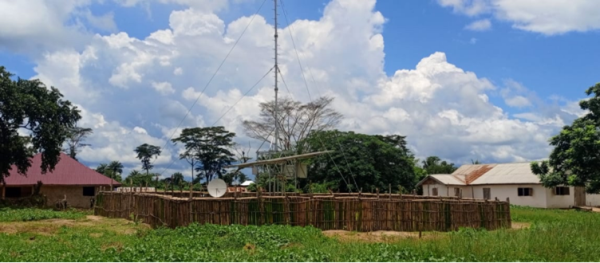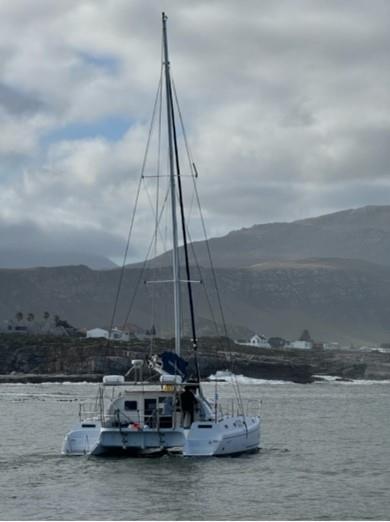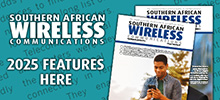02 January 2025
Africa is on the brink of a digital revolution. With vast landscapes and diverse geographies, the continent faces unique challenges in achieving universal connectivity. From remote rural regions to expansive maritime areas and bustling urban centres, digital connectivity isn't just about access; it's about empowering communities, unlocking economic potential, and driving sustainable development.
Since entering the African market in 1997, ZTE Corporation has witnessed and actively participated in the continent's communication technology evolution, from 2G to 5G. The networks built by ZTE now serve 400 million users across Africa, and the company has established trusted, mutually beneficial strategic partnerships with operators and partners in more than 50 countries in the region.
In recent years, Africa's urbanization process has accelerated significantly. Some countries, such as Gabon (91%), Libya (82%), and the Democratic Republic of Congo (69%), have urbanization rates far exceeding the global average of 56%. However, while cities are rapidly developing, ensuring that rural and remote areas are not left behind remains a critical challenge. Balancing rapid urban growth with the comprehensive development of rural regions is key to Africa's sustainable development.
ZTE, through three compelling cases, demonstrates how innovative technologies are enabling digital connectivity across Africa, addressing these challenges and contributing to a more inclusive digital future.
Connecting remote communities: the Liberia rural network
In Liberia, where remote rural areas lack basic infrastructure like roads and electricity, achieving reliable connectivity has long been a challenge. ZTE collaborated with Orange Liberia on the Enhance Rural Area project, deploying 128 Rural EcoSites to bring 2G and 4G network services to over 580,000 users in some of the country's most inaccessible regions.

ZTE Rural EcoSites in Liberia
The project's innovative solution is designed specifically for regions with limited resources. ZTE’s Rural EcoSite operates entirely on solar power, supplemented by smart lithium batteries, ensuring uninterrupted connectivity even during Liberia's extended rainy season. Its low-power consumption and wide-coverage radio access network (RAN) is compatible with multiple standards (2G/3G/4G/5G), allowing for flexible upgrades to match different stages of network development.
Construction in such remote areas posed significant challenges, from rugged terrain to the lack of grid power. ZTE's modular tower design, however, made transportation and deployment easier, reducing construction time by up to 60% and costs by 70%. The project not only provided critical communication services but also opened new opportunities for economic development, especially in agriculture, by enabling farmers to access markets and information.
Expanding horizons: 5G ultra-range maritime coverage
In South Africa, ZTE launched Africa's first 5G Ultra-range maritime offshore coverage in Mossel Bay, Western Cape. This innovative deployment extends high-speed, reliable internet access to previously unreachable maritime areas, delivering speeds of up to 116.92Mbps for single UE (user equipment) and 210Mbps for multi-UE with the 5G outdoor CPE, at distances of up to 22km from the shore.

5G ultra-range maritime coverage testing
The implications of this innovation are profound. Local fishermen now have access to real-time weather forecasts, market prices, and communication tools, enabling safer operations and better planning. Advanced applications such as vessel tracking, remote monitoring, and live streaming are enhancing efficiency in industries like fisheries, shipping, tourism, and marine research.
The maritime coverage aligns with both South Africa's and the African Union's vision for a digitally connected continent. By leveraging 5G technology, it not only drives economic growth but also supports sustainable development goals, such as marine ecological protection and technological innovation. The Ultra-range 5G network is a testament to how technology can transform even the most challenging environments.
Showcasing the future: 5G-A public experience
In Cape Town, ZTE hosted a 5G-A public experience event that demonstrated the immense potential of next-generation networks. With record-breaking download speeds of 9.2Gbps, achieved through ZTE's advanced millimeter-wave technology, the event highlighted 5G-A's ability to deliver ultra-low latency, high bandwidth, and efficient resource allocation.
The event also showcased innovative applications powered by 5G-A technology. For instance, AI-Generated Content (AIGC) leveraged 5G-A's real-time cloud-rendering capabilities to create dynamic content such as images and video, showcasing its potential in industries like media and education. Similarly, a robotic dog equipped with advanced sensors utilized 5G-A's low-latency connectivity to perform precise environmental mapping and real-time data uploads, demonstrating its potential in critical industries such as mining and rescue operations.
By integrating these advanced applications, the event illustrated how 5G-A is paving the way for smart cities, industrial innovation, and other transformative technologies.
From Liberia remote areas to South Africa's maritime zones and urban centres, ZTE's initiatives exemplify the power of technology to transform lives. These efforts demonstrate that digital connectivity is not a one-size-fits-all solution; it requires tailored approaches to address the unique challenges of each environment. Working hand in hand with African leading operators and partners, ZTE is committed to advancing the continent's digital future by bridging the digital divide, enabling economic opportunities, and driving sustainable development.







